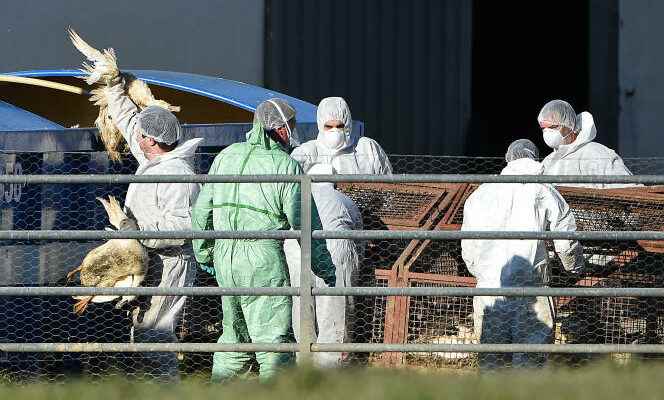In ten days, the hatches of the chicken coop of Rudy Belland, in Degré, in the Sarthe, will not open, contrary to what was planned. Its yellow chickens raised traditionally in the open air, after the first month spent in the warm, will remain cloistered. “It is against nature to leave animals locked up like this”protests the farmer.
A case of bird flu was detected about twenty kilometers from his farm. The virus has, in fact, reappeared in French farms since the end of July. As of November 8, 49 outbreaks were identified, the most affected departments being Vendée and Maine-et-Loire. About 770,000 poultry were culled preventively.
Faced with this new spread, the Ministry of Agriculture, citing “an unprecedented persistence of the virus in the environment and a strong migratory activity of wild birds”, has decided to raise the risk level for avian influenza to high. If measures were already taken in the affected departments, the ax fell on the whole of the national territory, Friday, November 11. A priori, from this date, all poultry must be confined.
Heavy bill for the state
Already, a year ago, the rule applied to French farms. The ace. From November 2021 to May, France suffered an avian flu epizootic on an unprecedented scale. Not only was the virus spreading for the fourth time since 2015 in the Southwest, the heart of foie gras production, but it was also spreading in the Grand-Ouest, in particular in Vendée, Loire-Atlantique and Maine. -et-Loire.
A strategic region considered as the second center of poultry and egg production, behind Brittany, and above all a nerve center for the genetics of all French poultry. The result is an assessment of this catastrophic health crisis with an estimated number of cases of 1,378 and a volume of ducks, hens, turkeys and guinea fowl eliminated of more than 20 million heads. As for the bill related to compensation for the sectors, it is proving very heavy for the State, expected at 1.1 billion euros.
This time, the amount of compensation for breeders would be conditional on compliance with the rules of confinement and biosecurity. And exceptions are limited. “ There is a tolerance for self-sufficient farms of less than 1,500 ducks, which can set a net on a course adjoining the building”explains Marie-Pierre Pé, director of the Interprofessional committee of palmipeds with foie gras (Cifog).
You have 49.75% of this article left to read. The following is for subscribers only.
